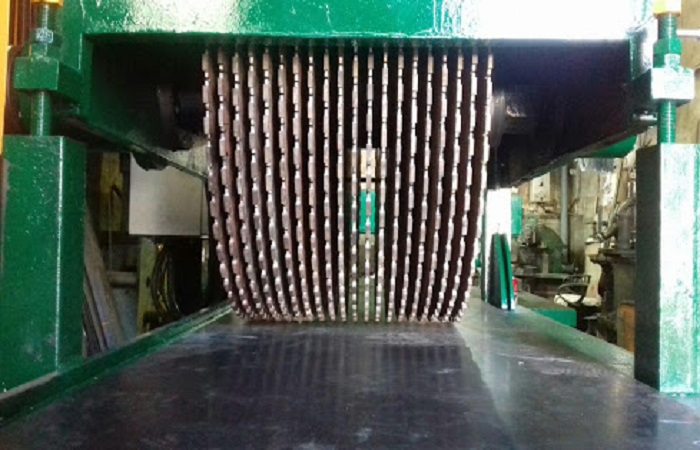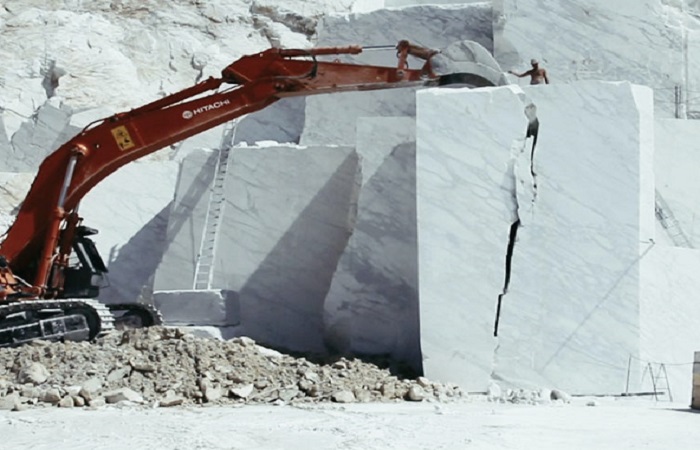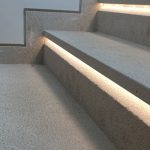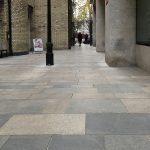Marble Processing Stages

Marble Processing Stages
Stages of marble processing will be discussed here. Marble processing is a fascinating art. From quarry and until they are loaded onto containers ready for shipment, marble slabs go through different transformation phases. Depending on the needs, each block of marble is cut in slabs or as per the required measures
in order to build staircases or to be used in flooring, wall tiling, etc.
Processing Stages of Marble Stone
In this section we will go through marble processes stages one by one. If you are working in stone industry, you may find this passage very appealing. Thus, stay with us to the end.
Mining the First Stage
Nature is in charge of providing marble with its shape and color for thousands of years. Therefore, this is always a unique, rare material. Mostly composed of calcium carbonate, marble has been and continues to be used as a construction and decorative material, due to its beauty and resistance. Marble is currently being obtained not only from open cast quarries but also from underground quarries.
Extraction methods and the resulting marble block sizes will depend on the quarry in question. Marble quarrying is usually done in vertical cuts. However, there are also cases where it is also done in horizontal cuts. This shall depend on the area’s morphology. The resulting block comprises 6 parallel sides. Each of these sides weighs between 6 and 15 tones.
Block Classification
Once each block is extracted from the quarry, these are classified based on certain quality criteria, such as block size, tones, amount of streaks (the lower the amount of streaks, the higher quality and better classification), cleanliness (clean materials are those with no stains), cracks.
As a matter of example, a top quality Pietra Grey Marble block would be a darker color tone with few streaks. Depending on how each block is classified, this will determine the marble’s price.
Arrival and Unloading of Marble Blocks
Once the blocks have been extracted from the quarry, these are transported by HGV lorries to the manufacturers for processing. At each production center, the blocks are unloaded and classified in the blocks yard prior to being sawed. Due to their large dimensions and heavy weight, the blocks need to be moved and handled with cranes and specific machines, both during loading/unloading and during processing. Blocks are generally stored outdoors in the block yard until the next phase that is the marble processing phase.

Marble Cutting
Marble is cut using multi-wire or block cutters. Depending on their dimensions, blocks may be cut using different methods, i.e., large blocks will be processed in the multi-wire cutter, while smaller, irregular blocks will be cut using block cutters. The aim is to make the most of the block’s measurements by reducing any waste as much as possible.
Other features such as the type of marble, quality, required materials (slabs, tiles or staircases) shall also influence the choice of block to be cut. Multi-wire cutters will produce slabs. On the other hand, block cutters will produce strips that will be subsequently processed by the mitre saw or cutter in order to create tiles.
Multi-wire Marble Cutting
Blocks are introduced in the machine by means of a platform that simplifies their movement. They comprise diamond wires that can cut the block in a vertical direction. In this manner, they are able to obtain as many slabs as the number of wires they are equipped with. Once the block has been sawed, the slabs are processed individually in a production chain.
Marble Block Cutting
In the case of highly irregular blocks, cutting performance levels will drop and therefore, there will be additional costs. For this reason, we use block cutters instead. Block cutters are equipped with a large diameter diamond saw blade to cut blocks in a vertical direction. These cuts are made in both directions.
At the same time, these also include a further horizontal saw blade to cut the strips once the right vertical thickness has been achieved. Once the strips are obtained, these are processed in the cutter to obtain the desired measurements.
Marble Strengthening and Polishing
Slabs are taken to the production line for further processing. As a first step, the material is strengthened by attaching a mesh for further resistance. Following, the marble is subject to an abrasion process in order to change its appearance and to produce different finishes:
Polishing
In this case we enhance the marble’s shine and color by leaving a smooth, glossy surface. Polishing time will vary depending on the block dimensions. It can usually take between 45 and 60 minutes.
Honing
Honing consists of achieving a matt, shine free surface. Its main difference with the raw marble is that this finish removes all cutting marks.
Ageing
This finish provides natural stonework with a rugged, shine free aspect resembling natural wear and tear.
Bush hammering
Produces a coarser finish providing additional grip, which makes it ideal for outdoor areas.
Sanding
This finish achieves a much less coarse surface than the bush hammering process.
Split Face
This is the most rustic finish, which can achieve a very rugged surface.
Slab Storage
Once the corresponding finish has been applied, the slabs will be ready for display or will go directly to packaging ready for shipment. If the marble slabs are being shipped abroad, a series of wooden or iron bundles will be prepared in order to introduce them into containers.
Marble Loading and Shipment
Marble attracts a great deal of interest worldwide. For that reason, you can easily find it anywhere in the world. As previously mentioned, we will use different shipment methods depending on the destination.
Among the most common means of transportation are ships, lorries and train to ensure that our marble reaches its final destination.
Short Review on Marble Processing
Generally, marble blocks are saw cut into slabs. Small marble blocks will be processed by simple disc saws to produce marble slabs. Medium and large marble blocks will be processed by gang saws and will be typically used to produce standard 2-cm thick one-side-polished marble slabs. Marble from the upper benches of the open-pit production contain small defects, such as holes, cracks and fossils.
Therefore, marble blocks produced during the early stage will often need to be treated with resin to ensure final product quality. This will double the polishing time needed as the slabs will need to be polished twice. As marble quality improves with mining depth, this added polishing step will be reduced to a limited level.
To learn more about us, click here.
Send your price quotes directly to our WhatsApp through this Link: https://wa.link/ord5k8
Sources
www.pulycort.com/en/marbles/marble-processing.html
www.kingstonemining.com/htm/en/yewu/marble
- Back To Articles
- armani grey marble, armany grey, blocks, blocks processing, blocks quarrying, extracting blocks, gray blocks, grey Armany, marble blocks, marble factory, natural stone blocks, Niayesh, NIAYESH STONE, petro grey, Pietra Grey Marble, pietra grey marble blocks, Pietra Grey Marble Tiles, pietra marble, quarrying blocks, stone blocks, stone grey blocks, stone processing
Article
Natural Stone Applications
- 22 December 2022
Iranian Stones Introduction According to Source and Quarry
- 21 December 2022
Technical Stone Introduction and Quarrying Procedures
- 21 December 2022
Categories
- blog757
- news1
- Specialized articles756













